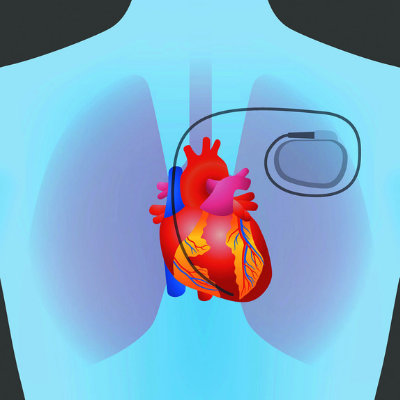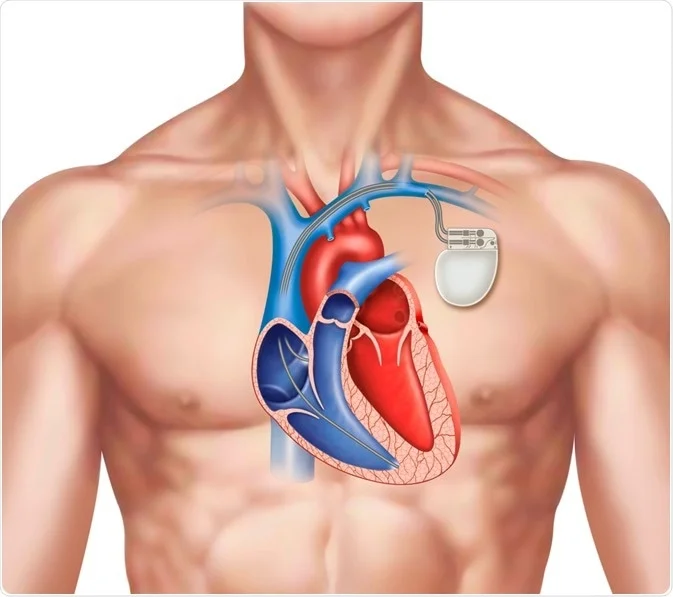Pacemaker
Although it weighs just about an ounce, a pacemaker contains a powerful battery, electronic circuits and computer memory that together generate electronic signals. The signals, or pacing pulses, are carried along thin, insulated wires, or leads, to the heart muscle. The signals cause the heart muscle to begin the contractions that cause a heartbeat. A pacemaker is implanted just below the collarbone in a procedure that takes about 1-2 hours. It is programmed to stimulate the heart at a pre-determined rate, and settings can be adjusted at any time. Routine evaluation, sometimes even via telephone, ensures the pacemaker is working properly and monitors battery life, which generally runs from five to ten years.
Single-Chamber Pacemaker

Single-Chamber Pacemaker – In a single-chamber pacemaker, only one wire (pacing lead) is placed into a chamber of the heart. Sometimes it is the upper chamber, or atrium. Other times it is the lower chamber, or ventricle.
Dual-Chamber Pacemaker

Dual-Chamber Pacemaker – In dual chamber pacemaker, wires are placed in two chambers of the heart. One lead paces the atrium and other paces the ventricle. This approach more closely matches the natural pacing of the heart. This type of pacemaker can coordinate function between the atria and ventricles.

